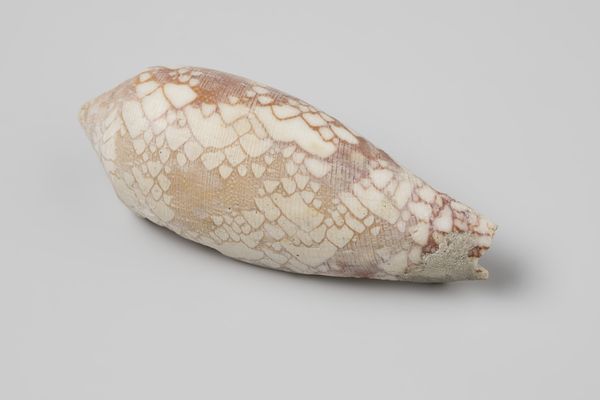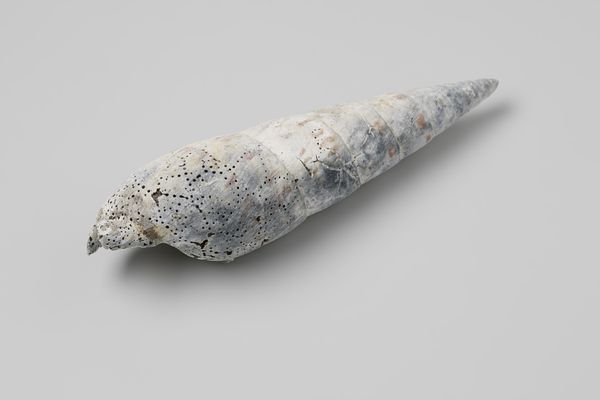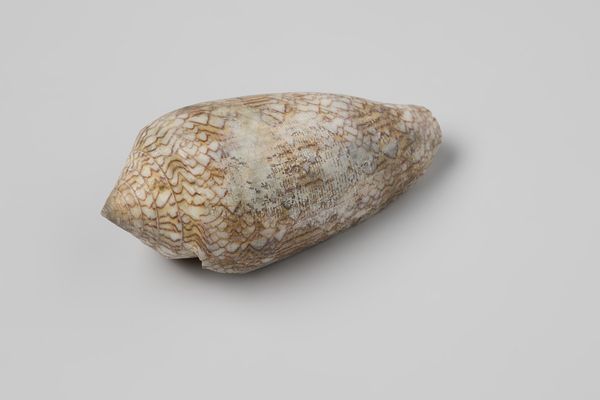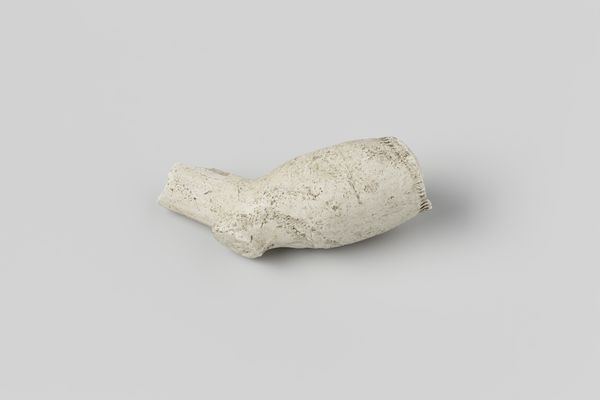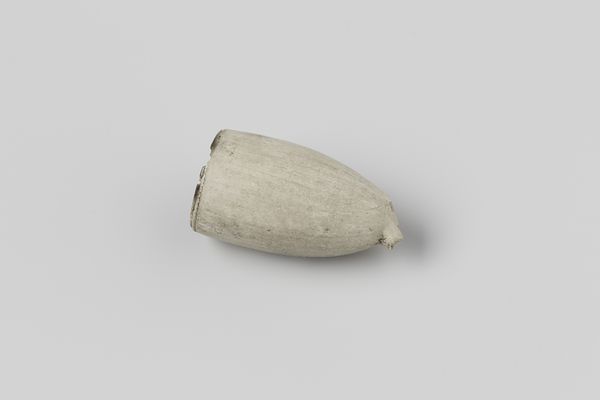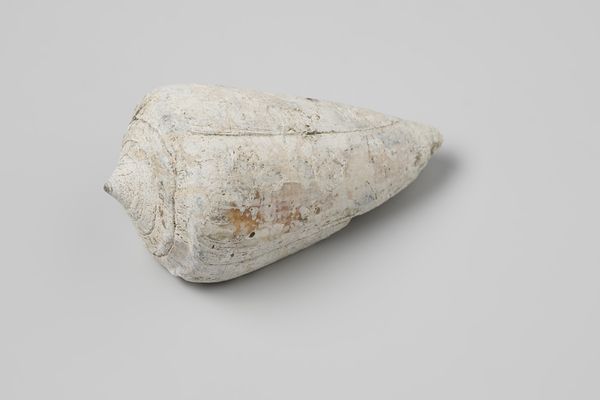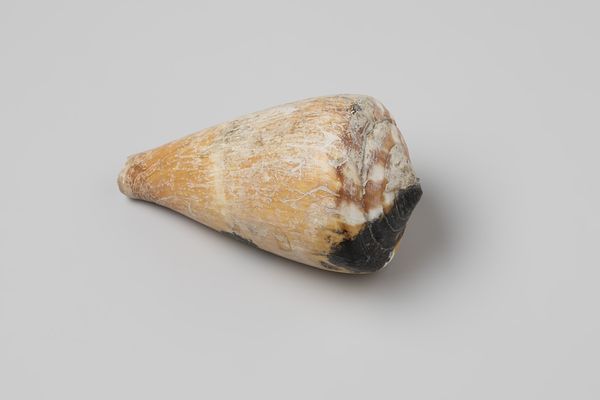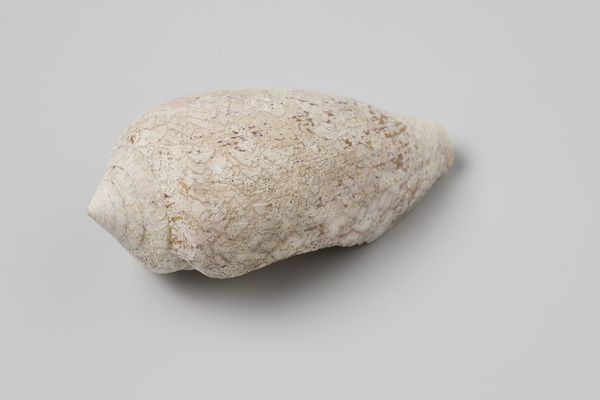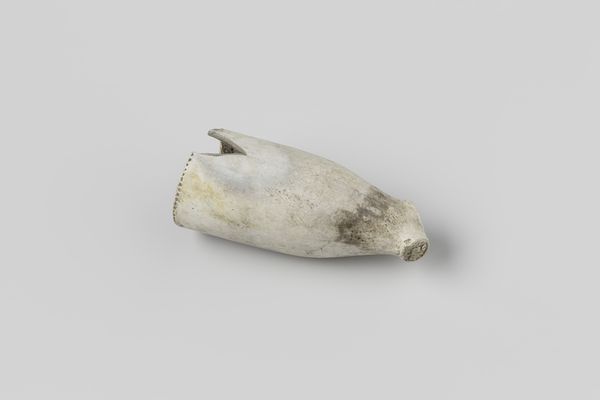
Conus marmoreus shell from the wreck of the Dutch East India ship Witte Leeuw before 1613
0:00
0:00
found-object
#
3d sculpting
#
circular oval feature
#
organic
#
3d printed part
#
rounded shape
#
jewelry design
#
virtual 3d design
#
round design
#
found-object
#
indigenism
#
curved arc
#
3d shape
#
geometric
#
ancient-mediterranean
#
round circular shape
#
islamic-art
#
decorative-art
#
naturalism
Dimensions: length 7.3 cm, width 4 cm, depth 4 cm
Copyright: Rijks Museum: Open Domain
This is a Conus marmoreus shell from the wreck of the Dutch East India ship Witte Leeuw. The shell presents a captivating display of natural geometry and texture. Its conical form, spiraling gently from base to tip, is covered in an intricate pattern of tessellated shapes, each a pale ivory outlined by delicate brown. The shell's surface is weathered and worn, telling a story of submersion and the passage of time. The arrangement of these shapes creates a visual rhythm, a play between figure and ground, that invites close inspection. This pattern is not merely decorative; it's intrinsic to the shell's structure, reflecting its growth and adaptation. Viewed through a structuralist lens, the shell is a sign, a natural artifact imbued with layers of meaning. It symbolizes trade, exploration, and the complex relationship between humans and the natural world. The shell destabilizes notions of perfection, revealing beauty in decay. Its structure reminds us that form and function are inextricably linked, each influencing the other in a continuous cycle of creation and transformation.
Comments
No comments
Be the first to comment and join the conversation on the ultimate creative platform.

